Wire brushes may look simple, but many types are designed for specific tasks. Whether consumers need to clean decades of rust off an old tool, prep a surface for welding, or strip paint before a fresh coat, using the correct wire brush can save them time and frustration.
For this reason, retailers must also stock a good variety to meet their needs. This article will explore the most common types of wire brushes, explain which features matter, and share tips to help retailers stock the best ones for their consumers in 2025.
Table of Contents
Why do consumers use wire brushes
Common types of wire brushes
1. Channel scratch brushes
2. Welding or ‘elder’ brushes
3. Scratch brushes (general purpose)
4. Toothbrush-style wire brushes
5. Utility brushes
6. Flat-wire broom brushes
7. Wire wheel brushes
8. Twisted wire brushes
9. Cylinder brushes
10. End wire brushes
How to choose the best wire brush
1. Match the filament material to the job
2. Decide on the filament configuration
3. Size of the work area
4. Filament Diameter & Length
In conclusion
Why do consumers use wire brushes
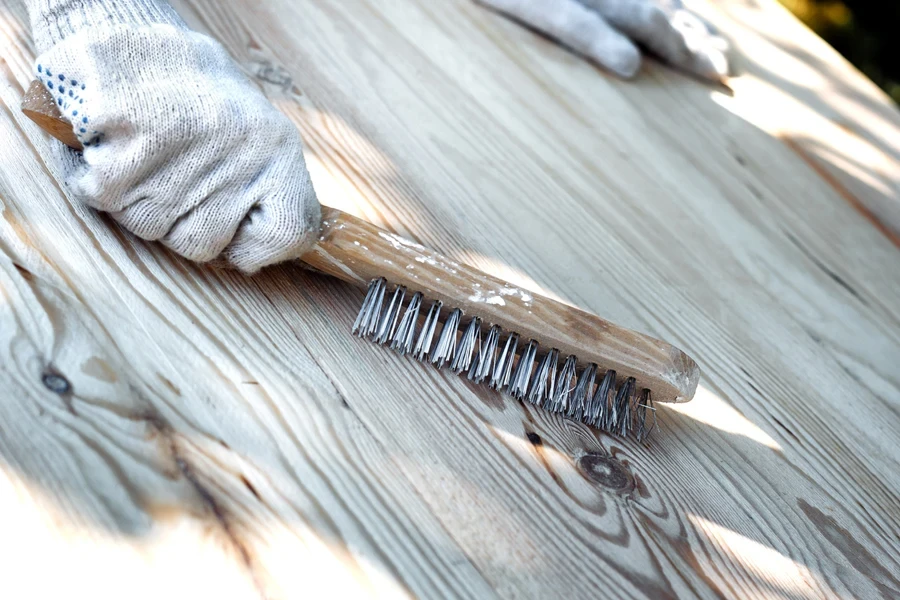
A wire brush has stiff, abrasive bristles that easily scrape unwanted materials like rust, paint, or thick grime from metal and other surfaces. Because the filaments are rigid and durable, they can tackle tough cleaning jobs that would wear out or destroy regular bristle brushes. Here are some things consumers can use them for:
- Surface preparation: If consumers want to paint or weld, they can use a wire brush to create a clean, debris-free surface.
- Rust and corrosion removal: A wire brush is great for scraping off rust or flaky paint from metal objects.
- Welding cleanup: After welding, consumers can knock off slag and spatter to leave their work neat and ready for finishing.
- Deburring: People often use wire brushes in manufacturing to remove small burrs or leftover residue on newly cut metal parts.
Common types of wire brushes
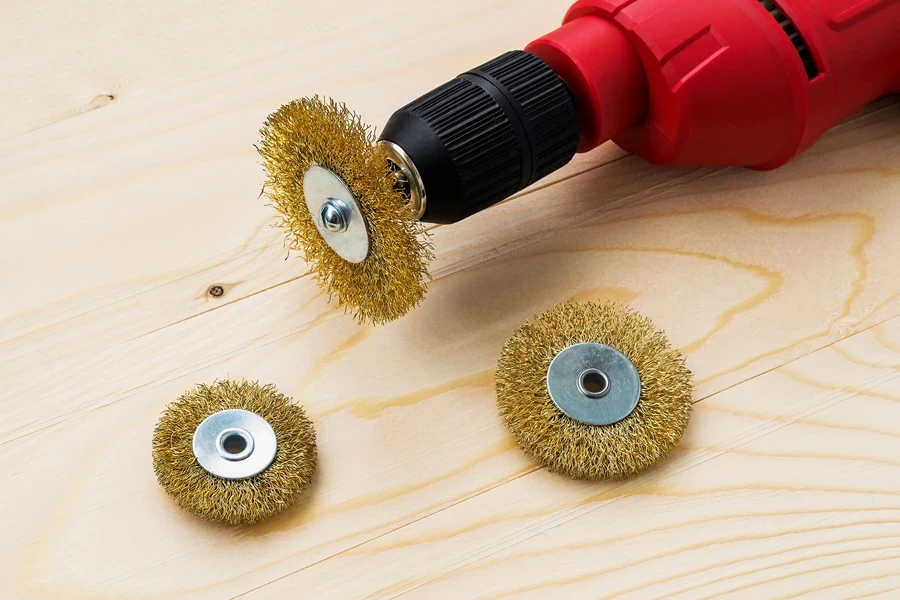
While wire brushes all share the same basic function—cleaning and abrading—they come in several styles. Here’s a rundown of the main varieties:
1. Channel scratch brushes
These have filaments set into a metal or plastic channel, often with a wooden or plastic handle. They’re great for removing light paint, rust, or grime. Retailers can offer them in different handle shapes (straight or bent) and bristle materials (steel, stainless steel, brass, or bronze).
2. Welding or ‘elder’ brushes
Welding brushes have designs that can stand up to high heat and remove contaminants (like dust, oils, and burrs) before and after welding. They often have carbon or stainless steel filaments that can handle the extreme temperatures around a weld.
3. Scratch brushes (general purpose)
Classic scratch brushes have a wooden or plastic handle attached to a dense steel or brass filaments cluster. They’re versatile enough for day-to-day tasks like scraping off rust or peeling paint on smaller surfaces.
4. Toothbrush-style wire brushes
Picture a toothbrush but with metal filaments instead of soft bristles. These smaller brushes help you clean tight spots, corners, or detail areas. They’re more common in electronics assembly and for delicate metalwork since they give users a precise touch.
5. Utility brushes
A typical utility brush is around eight inches long and has a two or three-inch wide head. Many people keep one by the grill (for scraping char off the barbecue) or use it in a workshop to prep parts for assembly. The angled head and sturdy handle give consumers decent leverage for moderate-duty jobs.
6. Flat-wire broom brushes
Sometimes, consumers need a push broom with real muscle—especially if sweeping sticky or caked-on debris. Flat-wire brooms have wide steel filaments that scrape off thick grime more effectively than a standard shop broom.
7. Wire wheel brushes
Consumers can attach these circular brushes to power tools like angle or bench grinders. The rotating wheel lets them remove paint, rust, or burrs faster than they could by hand. Also, the filaments can be crimped or knotted, depending on how aggressive consumers need to be.
8. Twisted wire brushes
Also known as tube brushes or bottle brushes. Manufacturers make them by twisting the stem wire around the filaments, creating a narrow, cylindrical shape. These work great for cleaning the inside of pipes, tubes, or holes. Consumers can use them by hand or mount them in a power drill for added speed.
9. Cylinder brushes
These have a core with filaments that run around the cylinder in a spiral or coil arrangement. If consumers need to quickly clean a large, flat surface like a conveyor belt, cylinder brushes are their best bet. Remember that shorter filaments give a more forceful scrub, while longer ones offer gentler, more flexible brushing.
10. End wire brushes
These are like little cup brushes with a smaller diameter. They’re perfect for getting into hard-to-reach spaces, deburring holes, or cleaning tight corners. If you see something called a “stem brush,” that’s an end wire brush, often powered by a drill or similar tool.
How to choose the best wire brush
Picking out a wire brush can be confusing, but it’s pretty straightforward once retailers focus on a few key points:
1. Match the filament material to the job
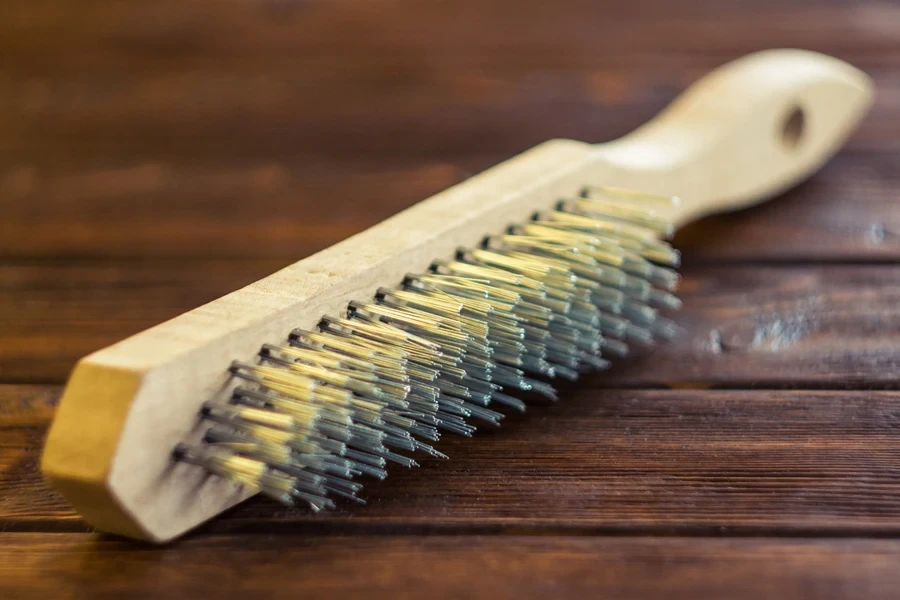
For instance, if consumers are working on stainless steel, they shouldn’t use carbon steel filaments, or they might cause rust problems later. Softer metals like copper or brass might prefer a gentler brush material like brass or nylon.
Carbon steel wire brushes
Carbon steel is tough and aggressive and works great on rough surfaces. However, it can leave deposits behind, which can corrode non-ferrous metals.
- Best for: Rust removal, heavy-duty cleaning, paint stripping, and weld cleaning on iron, carbon steel, and other ferrous metals.
- Avoid using on: Stainless steel, brass, aluminum, or copper (can cause surface damage or contamination).
Stainless steel wire brushes
Stainless steel wire brushes are the better option for consumers to avoid cross-contamination and corrosion, which is especially important for stainless steel applications.
- Best for: Stainless steel, aluminum, and non-ferrous metals.
- Avoid using on: Carbon steel (Although it won’t harm the metal, it’s not necessary).
Brass wire brushes
Brass is a gentler and non-corrosive option, perfect for polishing and light cleaning.
- Best for: Soft metals like brass, copper, or gold. Brass can also work on delicate surfaces like wood or plastic.
- Avoid using on: Hard metals or aggressive rust removal (brass bristles are too soft to handle such applications).
Nylon wire brushes
Nylon is flexible and won’t scratch surfaces. Consumers can also use them with solvents or clearing agents. Although it’s not metal, manufacturers often combine nylon with abrasives to give it more cleaning power.
- Best for: Light cleaning, delicate surfaces (wood, plastic, soft metals), and applying chemicals.
- Avoid using on: Heavy rust or thick coatings.
2. Decide on the filament configuration
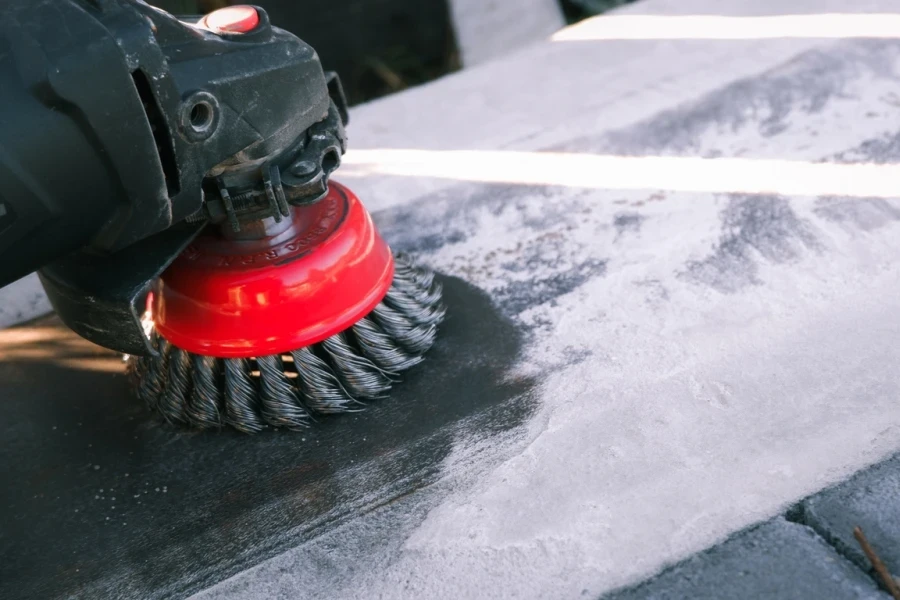
How aggressive will the wire brush be? That’s where the filament configuration comes in. It helps determine how the brush will interact with the surface. Here’s a quick look at what to know about the different filament configurations:
| Filament type | Flexibility | Best for | Aggressiveness level | Target audience |
| Crimped | Moderate | General purpose rust removal and surface prep. | Moderate | DIYers and general-purpose industrial applications. |
| Knotted (twisted) | Rigid & strong | Heavy-duty rust, weld cleaning, and scale removal. | Very aggressive | Welders, fabricators, and heavy-duty industrial users. |
| Straight | Soft & flexible | Light cleaning, polishing, and delicate work | Mildly aggressive | Average users |
3. Size of the work area
The consumer’s work area will also determine what kind of wire brush they will use. Here’s a quick look at the options retailers can offer consumers based on their work area:
| Brush type | Best for | Advantages | Recommended for |
| Handheld wire brushes | Small areas, corners, and manual cleaning. | Maximum control with no power tools needed. | General cleaning, rush removal, and weld prep. |
| Wheel & cup brushes | Large surfaces and heavy-duty cleaning. | Fast, powerful, and ideal for big (or heavy-duty) jobs. | Welders, metalworkers, and industrial cleaning. |
| Toothbrush-style wire brushes | Tight spaces and fine detail work | Precision cleaning and delicate surfaces. | Mechanics, jewelers, and delicate materials. |
4. Filament Diameter & Length
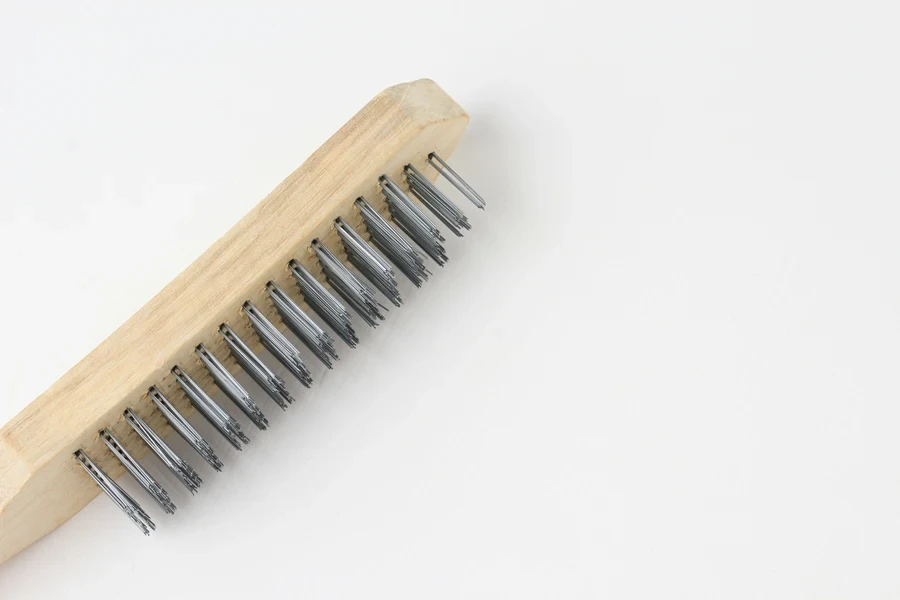
Never stock wire brushes without considering the filament diameter and length. These factors influence cleaning aggressiveness, flexibility, and precision—so it makes sense that offering the right one results in better performance.
Filament diameter
| Diameter | Best for | Advantages | Common uses |
| Fine diameter | Light cleaning, polishing, and delicate surfaces. | Gentle and precise cleaning. Also, it won’t scratch surfaces. | Jewelry, firearms, and soft metals. |
| Medium to coarse diameter | Heavy rust, thick paint, and weld spatter. | Strong cutting power and more durability than fine options. | Welding, rust removal, and heavy-duty cleaning. |
Filament length
| Filament type | Typical length (inches) | Typical length (mm) | Best for |
| Short filaments | 0.374” – 2” | 9.5mm – 50.8mm | Stiff, aggressive cleaning, rust removal, and weld cleaning. |
| Medium filaments | 2” – 6” | 50.8mm – 152.4mm | Balanced performance for general-purpose cleaning. |
| Long filaments | 6” – over 8” (some go up to 12”) | 152.4mm – 203.2mm | Flexible brushing, curved surfaces, and grooves. |
In conclusion
Wire brushes might seem like simple tools, but picking the right one can dramatically improve a consumer’s cleaning results, whether removing rust, prepping for paint, or tidying up a weld. Always encourage them to match the filament material to the surface, pick the right diameter for their task, and pay attention to filament length and configuration. With a little know-how—and the right wire brush—they’ll always breeze through tough cleaning and surface prep jobs.



